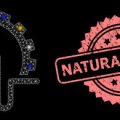Introduction to Modern Paganism in the UK
In recent decades, the United Kingdom has witnessed a remarkable revival and diversification of Pagan traditions, weaving ancient beliefs into the fabric of contemporary society. This resurgence is not merely a nostalgic nod to the past but reflects a living, breathing movement that actively shapes cultural identity and spiritual practice across Britain today. From bustling urban centres to the rural heartlands, individuals and communities are re-engaging with nature-based faiths, exploring rituals, festivals, and philosophies that draw inspiration from pre-Christian heritage.
Modern Paganism in the UK encompasses an array of paths—Wicca, Heathenry, eclectic witchcraft, and, notably, Druidry—each adapting old motifs for new contexts while embracing inclusivity and personal spiritual agency. The movement’s growth can be seen in public ceremonies at sites like Stonehenge during the solstices, the proliferation of local moot groups, and increasing representation in interfaith dialogues. This pluralistic landscape is fuelled by a collective yearning for environmental consciousness, ancestral connection, and alternative forms of meaning-making that resonate with 21st-century values.
Set against this dynamic backdrop, Druidic traditions have gained renewed prominence, both as reconstructed practices based on historical research and as innovative expressions of spirituality tailored to modern sensibilities. To truly understand how ancient divinatory customs are being reimagined within British Druidry today, it is essential first to appreciate the wider context of Pagan revival—a landscape where tradition meets transformation and heritage becomes a springboard for creative renewal.
2. Historical Roots of Druidism and Its Evolution
Druidism, as an indigenous spiritual tradition of the British Isles, has long captured the imagination of those fascinated by Britain’s ancient past. The earliest historical accounts of Druids, dating back to Roman times, depict them as learned priests, judges, and seers within Celtic society—custodians of oral wisdom who performed divination, rituals, and maintained the sacredness of groves. Much of what we know stems from outsider perspectives—Roman chroniclers like Julius Caesar—whose descriptions were often coloured by imperial motives or misunderstandings. Nonetheless, archaeological evidence such as stone circles, burial mounds, and ogham inscriptions hint at a deeply spiritual culture attuned to nature’s cycles.
Yet, the image of the Druid has never been static. Over centuries, especially following the Christianisation of Britain, original practices faded into obscurity, surviving mainly in folklore and myth. The 18th-century Romantic revival saw antiquarians and poets like Iolo Morganwg reimagine Druidic traditions through a Victorian lens—blending fragmentary history with creative interpretation. This process of reinvention continued into the 20th century with the rise of modern Paganism and groups such as the Order of Bards, Ovates & Druids (OBOD), who consciously reconstructed rituals and philosophies to align with contemporary spiritual needs.
Key Phases in the Evolution of Druidic Traditions
| Period | Characteristics | Sources/Evidence |
|---|---|---|
| Ancient Celtic Era | Oral traditions, nature-based rituals, divination practices | Classical texts, archaeological finds |
| Post-Roman & Medieval Periods | Diminished visibility; survival in folklore and place-names | Myths, local legends |
| 18th-19th Century Revival | Romantic reinterpretations; creation of new ceremonies | Literature, antiquarian writings |
| Modern Era | Pagan revival; inclusive community practices; environmental focus | Druid orders’ publications, interviews |
A Living Tradition: Adaptation and Meaning-Making
The modern reimagining of Druidic practice is not simply nostalgic but actively engaged with Britain’s present-day social fabric. Today’s practitioners blend ancient symbolism with progressive values—emphasising ecological stewardship and personal empowerment. Divinatory traditions once reserved for a select priesthood are now accessible to all seekers, reflecting a broader democratization within modern Pagan movements. In this way, Druidism’s evolution serves as both a mirror to Britain’s layered history and a living testament to the creative power of cultural memory.

3. Divinatory Practices: Ancient Wisdom and Modern Adaptations
The art of divination has long been intertwined with Druidic tradition, a thread that weaves through the tapestry of British history. Ancient Druids, as far as our sources suggest, employed a diverse array of divinatory tools and methods—ranging from the casting of ogham sticks and reading patterns in nature, to interpreting dreams and omens in the flight of birds. These practices were not merely mystical curiosities; they formed a living dialogue between the seen and unseen worlds, offering guidance for both community leaders and ordinary folk navigating the uncertainties of life on these isles.
Today, modern Pagans across the UK are rekindling this ancestral connection, yet with a contemporary sensibility that reflects both reverence for tradition and creative adaptation. The ogham alphabet, once carved into staves or stones, has found new life not only in handcrafted sets used for divination but also in beautifully illustrated oracle cards available at London’s esoteric bookshops or via independent makers on Etsy. Likewise, tree lore—so central to Druidic cosmology—continues to inform readings at gatherings from Glastonbury to Edinburgh, with practitioners blending old folklore with ecological awareness and environmental activism.
It’s worth noting that while some British Pagans strive for historical accuracy—painstakingly reconstructing rituals based on archaeological findings and medieval manuscripts—others take a more eclectic approach. You might encounter a circle in Sussex where traditional Celtic symbolism sits alongside tarot decks or even digital apps designed for intuitive guidance. This fusion isn’t simply about convenience; it’s an authentic reflection of Britain’s ever-evolving spiritual landscape, one where heritage meets innovation in response to modern needs.
One particularly British aspect of this revival is the emphasis on locality—the practice of drawing upon regional landscapes and folklore for divinatory inspiration. Whether it’s scrying with water from a sacred spring in Wales or meditating beneath ancient yews in Yorkshire, there’s a sense that place itself holds power and meaning. In this way, modern Druidic divination becomes not just an act of personal insight but also a celebration of Britain’s diverse natural and cultural heritage.
In summary, the reimagining of Druidic divinatory traditions by contemporary Pagans in the UK is characterised by a dynamic interplay between continuity and creativity. Through a blend of ancient techniques and modern reinterpretations, these practices continue to offer profound ways of connecting with spirit, land, and community—anchoring them firmly within the vibrant tapestry of British Paganism today.
4. Community, Ritual, and Landscape
Modern Druidry in the UK is not simply a solitary path of introspection; rather, it flourishes in the fertile ground of community. Gathering together—whether at seasonal festivals or intimate groves—Druids cultivate a shared sense of purpose and belonging. These communal aspects are essential, as they foster both learning and continuity within the tradition.
The Power of Gathering
Ritual gatherings serve as vital touchstones for modern Druids. From Beltane fires on the hills to quiet winter solstice ceremonies beneath ancient yews, these events are far more than symbolic observances. They are moments where individuals become part of something greater—a living tradition woven through collective intention and action. Modern Druidic groups often blend traditional rites with contemporary concerns, addressing environmental stewardship or social justice alongside spiritual practice.
Types of Gatherings and Their Purpose
| Type of Gathering | Main Activities | Cultural Significance |
|---|---|---|
| Seasonal Festivals (e.g., Samhain, Imbolc) | Rituals, storytelling, music | Marking natural cycles; community bonding |
| Moots & Groves Meetings | Workshops, discussions, divination practice | Skill-sharing; deepening spiritual practice |
| Pilgrimages to Sacred Sites | Ceremonial walks, meditation, offerings | Connecting with landscape and ancestral memory |
The British Landscape as Spiritual Centre
The unique landscapes of Britain—from misty moors to ancient stone circles—play a pivotal role in shaping Druidic identity and divinatory traditions. Places such as Avebury, Stonehenge, and the wild woodlands of Wales are not merely backdrops but active participants in ritual life. The land itself is seen as alive: a partner in communion and revelation.
Landscape’s Role in Divinatory Practice
Druids often draw upon the energies of local features—sacred springs, standing stones, or groves—to enhance divinatory acts like ogham reading or scrying. This connection grounds their practices firmly within British culture and geography, creating a dialogue between ancient wisdom and contemporary meaning-making. In essence, modern Paganism in the UK reimagines both community and landscape as integral co-creators in the unfolding story of Druidry.
5. Contemporary Voices and Challenges
Living Druidism: Stories from Modern Practitioners
Step into any British grove or Pagan moot, and youll find that contemporary Druids are as diverse as the landscapes they cherish. Some are drawn by a yearning for ancestral wisdom, others by ecological activism, and many weave together personal spirituality with creative practice. For many, divinatory traditions—whether ogham staves, tarot, or inspired trance—are not mere relics but living tools for insight. Yet, the lived experience of modern Druids in the UK is shaped as much by community as by individual quest: festivals like Beltane at Glastonbury or gatherings at Avebury stone circle foster shared rituals, while online forums allow urban practitioners to connect from afar.
The Tangle of Authenticity and Appropriation
With this revival comes an ever-present tension: what does it mean to be “authentic” in a tradition that is both ancient and reconstructed? The roots of Druidry may lie deep in British soil, but much of its visible practice has been pieced together from scattered historical fragments, Victorian romanticism, and contemporary inspiration. Debates about cultural appropriation arise too—especially when elements of Celtic myth or sacred sites are commercialised or detached from their context. For some, the challenge is about respect: honouring both the old sources and the communities whose stories have been marginalised or misunderstood.
Negotiating Identity in a Pluralistic Britain
Within the wider British spiritual landscape, modern Druids navigate complex identities. Are they guardians of native heritage, eco-activists with a mystical bent, or simply seekers carving out space for alternative beliefs? Interactions with other Pagan paths—Wicca, Heathenry, eclectic witchcraft—and dialogue with mainstream faiths have prompted ongoing negotiation about values, boundaries, and public representation. While some relish the fluidity, others long for clearer definitions. The result is a movement marked not just by diversity of practice but also by constant self-examination.
Looking Forward: Inclusivity and Innovation
As Druidic traditions continue to evolve within modern Paganism in the UK, questions of inclusivity—across gender, ethnicity, sexuality, and class—have come to the fore. New voices enrich old forms; innovation walks hand-in-hand with reverence. Whether facing scepticism from outside or wrestling with internal debates about authenticity and appropriation, today’s Druids are forging paths that are at once rooted and dynamic—a testament to the enduring human need for meaning in an ever-changing world.
6. Conclusion: The Future of Druidic Divinatory Traditions
As we stand at the crossroads of tradition and transformation, the future of Druidic divinatory practices within modern Paganism in the UK appears both vibrant and full of potential. What once may have seemed the exclusive preserve of niche circles is now being reimagined through a distinctly British lens—one that prizes innovation, inclusivity, and a deep connection to both heritage and landscape. Contemporary practitioners are not merely reviving ancient rites; they are adapting them for a diverse, digitally connected community, weaving together historical insight with fresh perspectives.
This ongoing evolution reflects wider shifts within Britain’s spiritual landscape. The UKs religious tapestry has become increasingly pluralistic, with more people seeking meaning outside mainstream faiths. In this context, Druidic divination offers a form of guidance that feels rooted yet flexible—open to personal interpretation and collective celebration alike. Whether it’s ogham staves used in urban parks or tarot decks inspired by local folklore, there’s an unmistakable sense of experimentation driving these traditions forward.
Inclusivity stands as one of the most exciting developments. No longer bound by rigid hierarchies or gendered roles, today’s Druidic circles welcome voices from across the spectrum—be they seasoned elders or curious newcomers, LGBTQ+ individuals or those from historically marginalised backgrounds. This spirit of openness ensures that divinatory practices not only survive but thrive, remaining relevant in a rapidly changing society.
Looking ahead, the trajectory for Druidic divination will likely continue to intertwine technological advances with age-old wisdom. Online communities, digital resources, and even augmented reality experiences are making it easier than ever for Britons to explore these paths, regardless of where they live. Yet this embrace of the new does not mean a rejection of tradition; rather, it signals a living practice—one that evolves while honouring its roots in the sacred landscapes and stories of Britain.
In sum, as modern Paganism flourishes across the UK, Druidic divinatory traditions are poised to play a vital role in shaping how individuals seek meaning and connection. By balancing reverence for the past with creative reinvention and a commitment to inclusivity, these practices are set not only to endure but to inspire future generations on their own journeys through Britain’s spiritual wilds.


